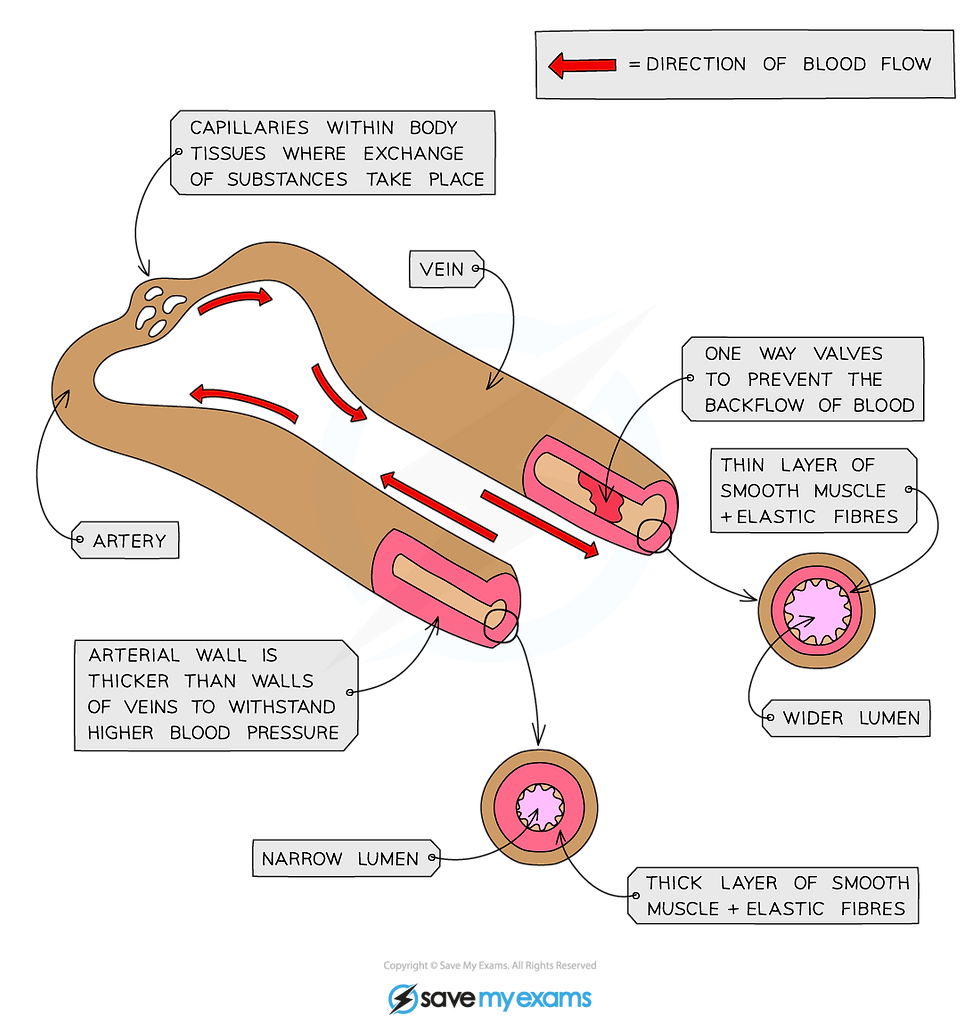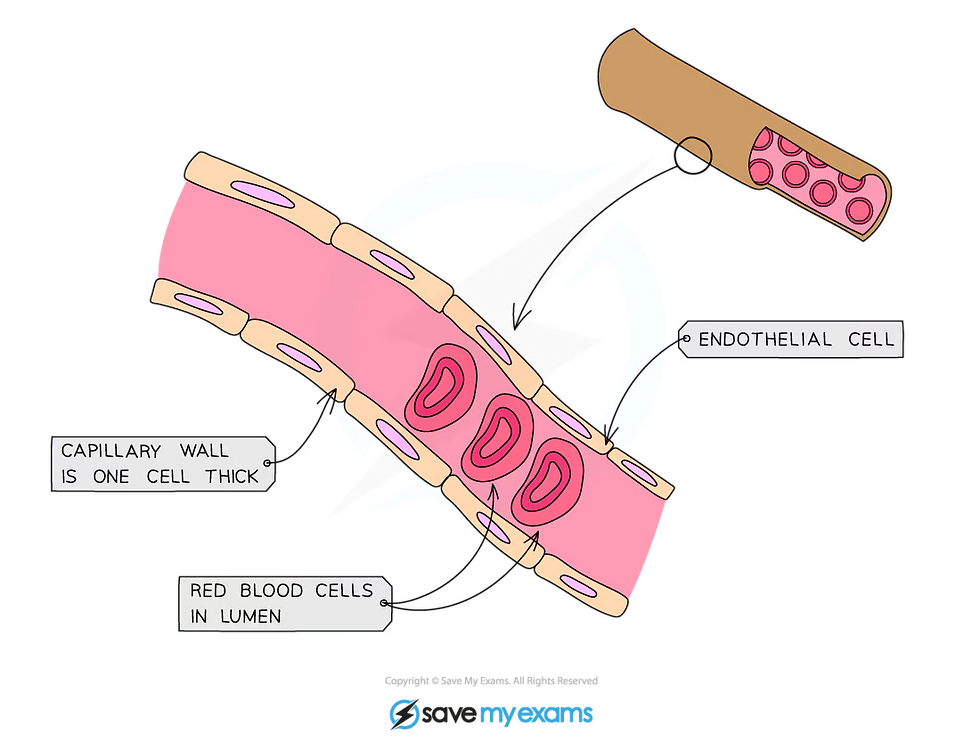#biology #CirculatorySystems #bloodvessels
Blood vessels
The blood vessels are a system of closed tubes within which blood flows.
Different types of blood vessels transport blood in different directions, and to different parts of the body.
Arteries
These blood vessels carry blood away from the heart at high pressure.
Arteries transport oxygenated.
○ The single exception to this is the pulmonary artery.
The walls of arteries are thick and muscular and contain elastic fibres.
Arteries have a narrow lumen.
Veins
These blood vessels carry blood towards the heart at low pressure.
Veins transport deoxygenated blood away from the body.
○ The single exception to this is the pulmonary vein
The walls of veins are thin in comparison to arteries.
Veins have a wide lumen.
Valves in veins prevent blood from flowing backwards.
Arteries and veins diagram
Arteries carry blood away from the heart at high pressure, while veins carry blood towards the heart at low pressure
Capillaries
These blood vessels carry blood to the cells of the tissues.
Capillaries transport oxygenated blood from the arteries to the cells, and deoxygenated blood from the cells to the veins.
The walls of capillaries are one cell thick and contain gaps to allow fluid to leak out.
Capillaries have a very narrow lumen.
Capillaries diagram
Capillaries are tiny blood vessels that carry blood to the cells of the body







What is the significance of the endothelium in blood vessels?
How do blood vessels regulate blood pressure?
What are some common diseases and conditions that affect blood vessels?
How does the body repair damaged blood vessels?
How does the structure of blood vessel walls contribute to their function?